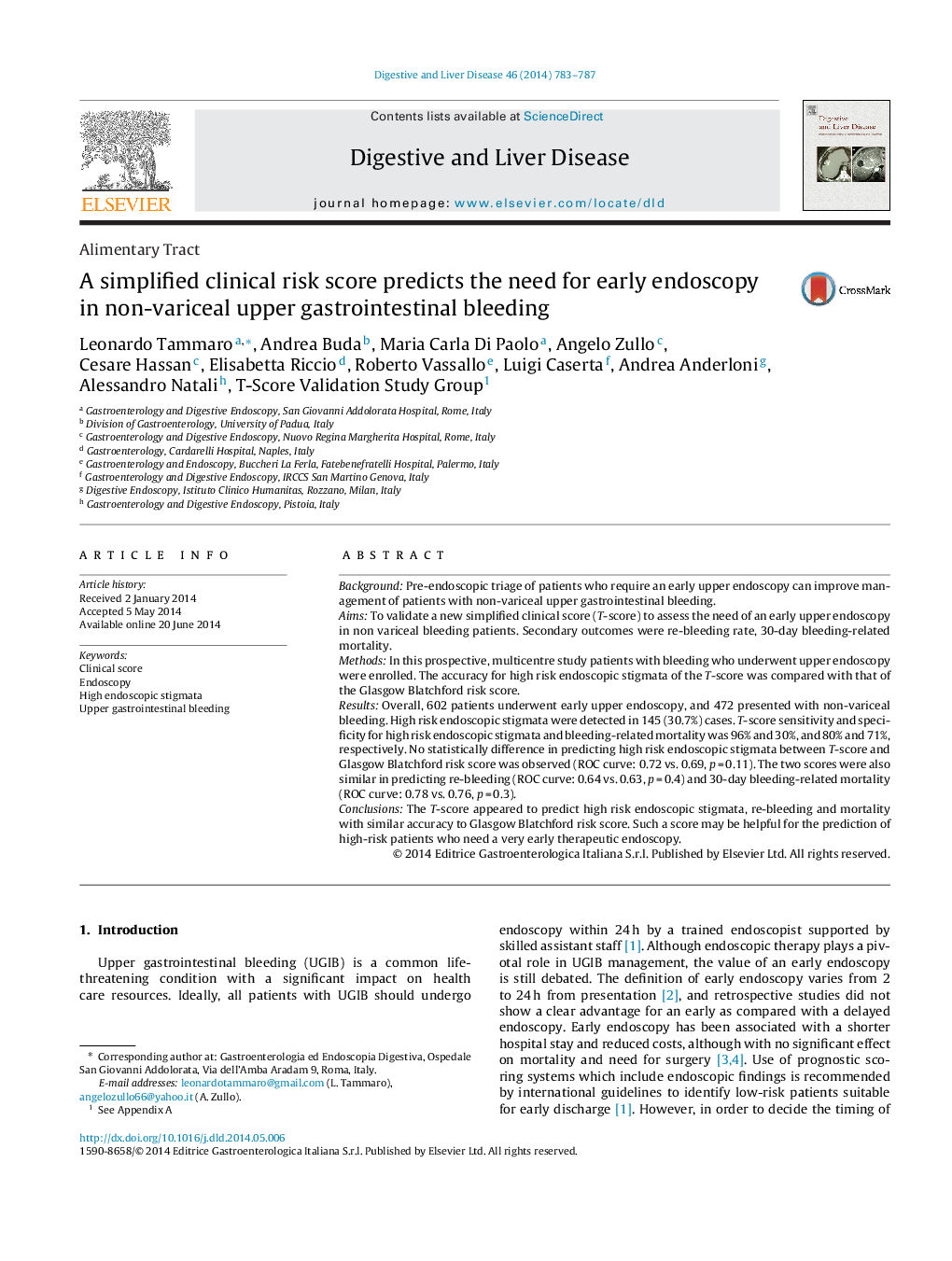| Article ID | Journal | Published Year | Pages | File Type |
|---|---|---|---|---|
| 6088364 | Digestive and Liver Disease | 2014 | 5 Pages |
BackgroundPre-endoscopic triage of patients who require an early upper endoscopy can improve management of patients with non-variceal upper gastrointestinal bleeding.AimsTo validate a new simplified clinical score (T-score) to assess the need of an early upper endoscopy in non variceal bleeding patients. Secondary outcomes were re-bleeding rate, 30-day bleeding-related mortality.MethodsIn this prospective, multicentre study patients with bleeding who underwent upper endoscopy were enrolled. The accuracy for high risk endoscopic stigmata of the T-score was compared with that of the Glasgow Blatchford risk score.ResultsOverall, 602 patients underwent early upper endoscopy, and 472 presented with non-variceal bleeding. High risk endoscopic stigmata were detected in 145 (30.7%) cases. T-score sensitivity and specificity for high risk endoscopic stigmata and bleeding-related mortality was 96% and 30%, and 80% and 71%, respectively. No statistically difference in predicting high risk endoscopic stigmata between T-score and Glasgow Blatchford risk score was observed (ROC curve: 0.72 vs. 0.69, p = 0.11). The two scores were also similar in predicting re-bleeding (ROC curve: 0.64 vs. 0.63, p = 0.4) and 30-day bleeding-related mortality (ROC curve: 0.78 vs. 0.76, p = 0.3).ConclusionsThe T-score appeared to predict high risk endoscopic stigmata, re-bleeding and mortality with similar accuracy to Glasgow Blatchford risk score. Such a score may be helpful for the prediction of high-risk patients who need a very early therapeutic endoscopy.
